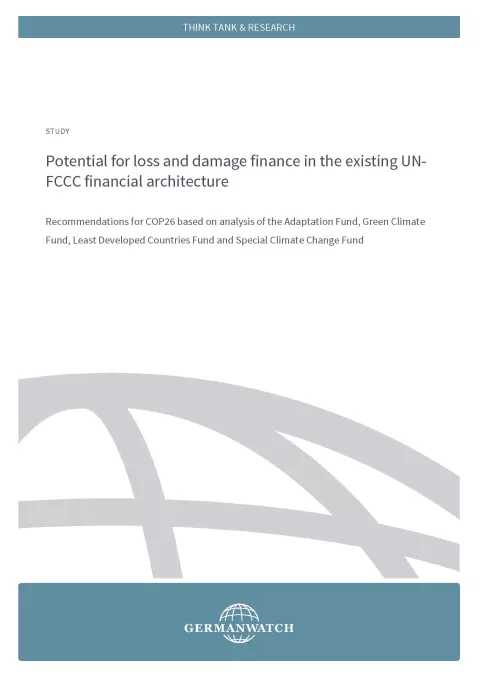
Loss and Damage due to climate change impacts is already a reality. Not only but most existentially for vulnerable developing countries and communities around the world that have contributed least to the climate crisis. How developing countries can be supported (financially) by the international community in addressing loss and damage has long been a discussion topic in international climate negotiations under the United Nations Framework Convention on Climate Change (UNFCCC). In 2015, the Paris Agreement, which is based on the principle of common but differentiated responsibilities, recognised the importance of averting, minimising and addressing loss and damage. Many researchers and organisations have, however, identified a finance gap regarding supporting vulnerable countries and the most vulnerable communities therein in dealing with loss and damage. Two questions that come up repeatedly in the context of the international discussion on finance for addressing loss and damage therefore are:
1. Which measures to deal with loss and damage can already be financed by the funds and financing mechanisms of the existing UNFCCC financial architecture?
2. Where are gaps and thus the need for expanding the current financial architecture with additional mandates, mechanisms or funds?
This paper seeks to help clarify these questions. It is based on in-depth analysis of the theoretic funding scope as well as the current project portfolio regarding the (potential) coverage of 12 selected loss and damage measures (e.g. support measures for climate-induced displaced persons). The analysed funds include the Adaptation Fund, Green Climate Fund, Least Developed Countries Fund as well as Special Climate Change Fund.
The analysis identifies both possibilities and substantial gaps in the funding of loss and damage measures through the UNFCCC financial architecture. COP 26 is central to creating the framework conditions necessary to capitalise on these possibilities and take appropriate steps to close the gaps.
Based on the findings of our analysis, recommendations for the upcoming COP 26 are formulated, aimed at advancing discussion on loss and damage finance at the COP to support those most affected by climate change impacts.





